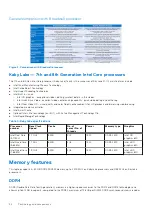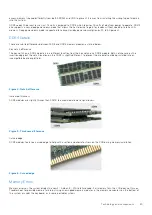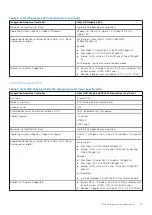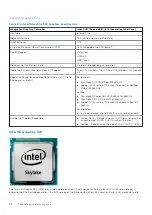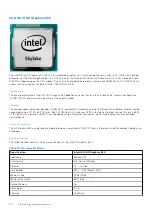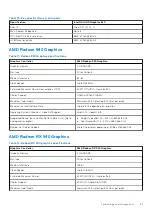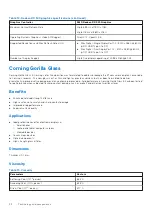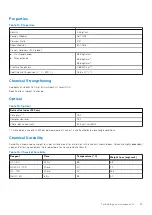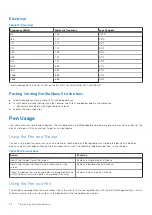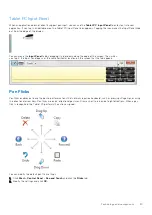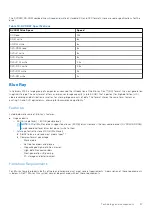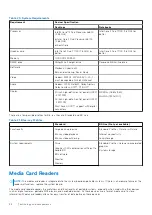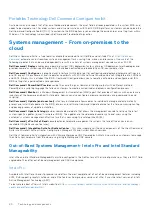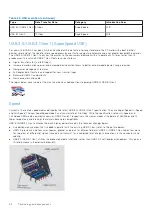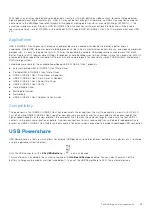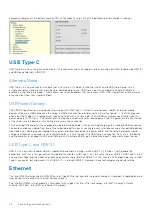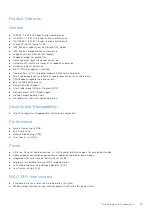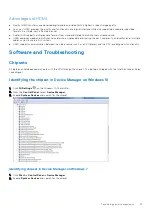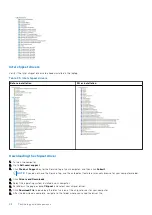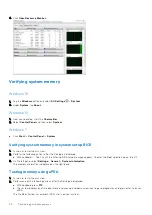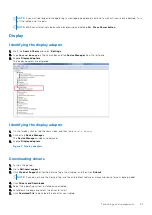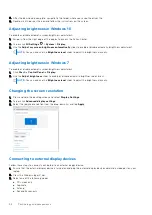
Table 20. System Requirements
Requirement
Device/Specification
Desktops
Notebooks
Processor
Intel® Core™2 Duo Processor E6800
(2.93 GHz)
or Intel Core 2 Duo Processor E6700
(2.66 GHz)
or Kentsfield
Intel Core 2 Duo T7100 (1.8 GHz) or
better
Graphics card
Intel Core 2 Duo T7100 (1.8 GHz) or
better
Intel Core 2 Duo T7100 (1.8 GHz) or
better
Memory
1 GB DDR2 SDRAM
RMSD drive
Philips® half-height drive
Panasonic® Slim-line drive
Software
Playback: Cyberlink®
Burn and authoring: Sonic/Roxio
Video
Codecs: MPEG2, MPEG4-AVC, VC-1 -
must be capable of H.264 HW accel
Audio
Codecs: LPCM, Dolby®, Dolby D,
Dolby Lossless, DTS™, DTS-HD™
Display
20-inch high-definition flat panel (HDFP)
- 2007FPW
24-inch high-definition flat panel (HDFP)
- 2407FPW
Must have HDCP** support with digital
connectors
WSXGA+ (1680x1050)
WUXGA (1920x1200)
There are a few possible profiles for Blu-ray; they are Standard and BD Live.
Table 21. Blue-ray Profiles
Standard
BD Live (Not yet available)
Functionality
Large back-up device
Blu-ray video playback
Blu-ray video authoring
Standard P Picture-in-Picture
Internet connectivity
Local storage
System requirements
Drive
Graphics/CPU combination sufficient to
handle BD
BD software
Monitor
Memory
Standard P Hardware-accelerated
graphics
System storage
Media Card Readers
NOTE:
The media card reader is integrated into the system board on portable systems. If there is a hardware failure or the
reader malfunctions, replace the system board.
The media card reader expands the usefulness and functionality of portable systems, especially when used with other devices
such as digital cameras, portable MP3 players, and handheld devices. All these devices use a form of media card to store
information. Media card readers allows for easy transfer of data between these devices.
38
Technology and components

